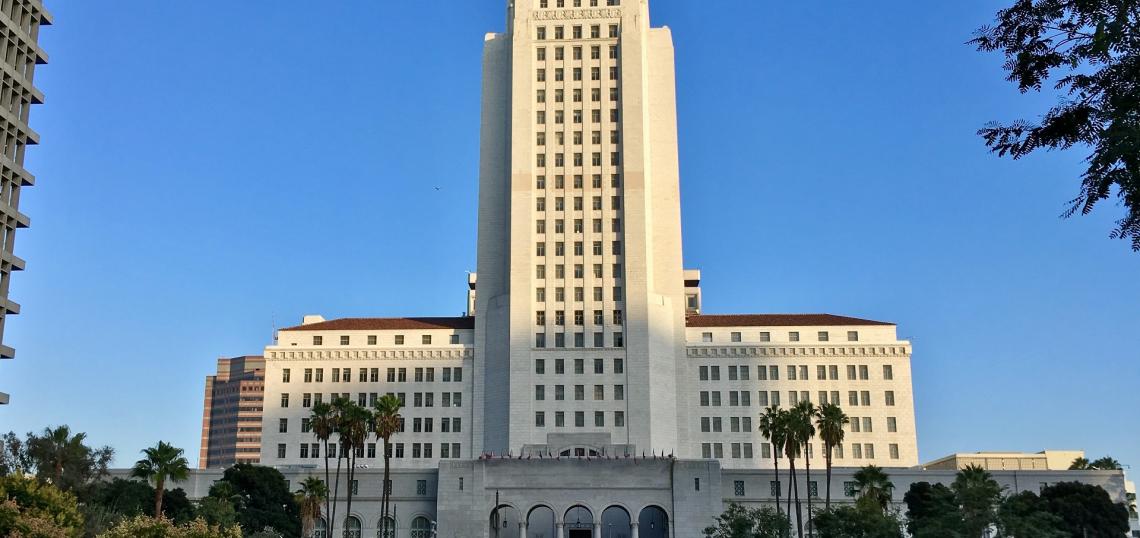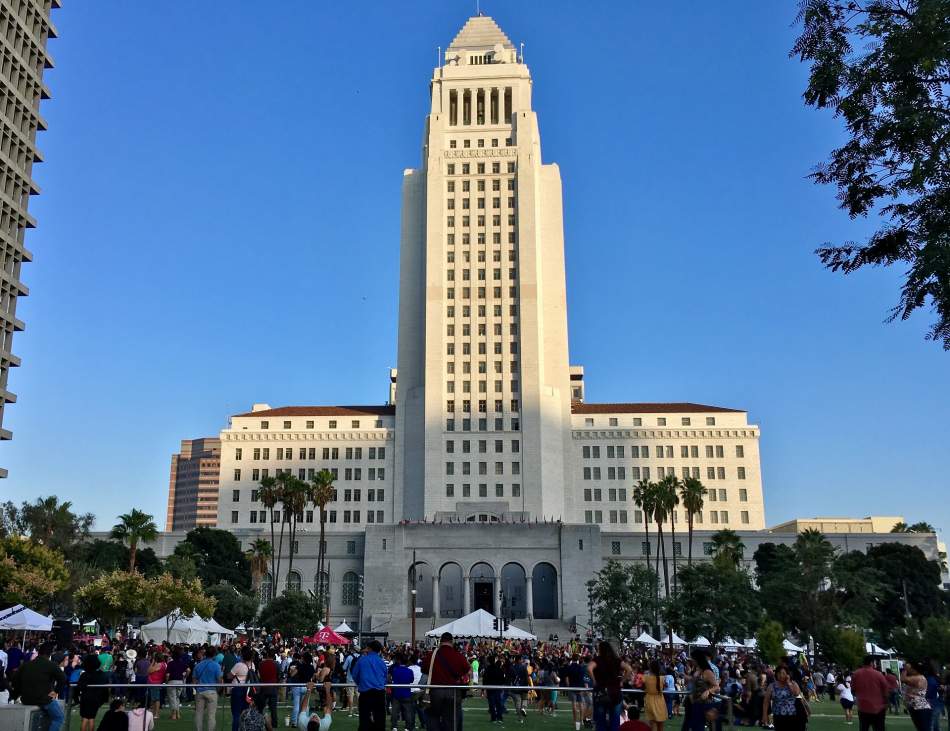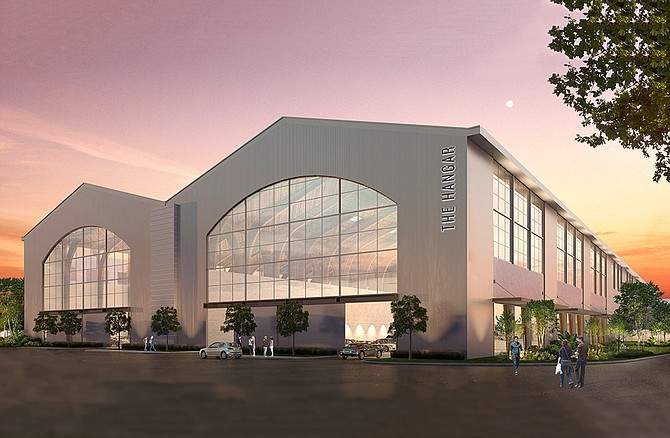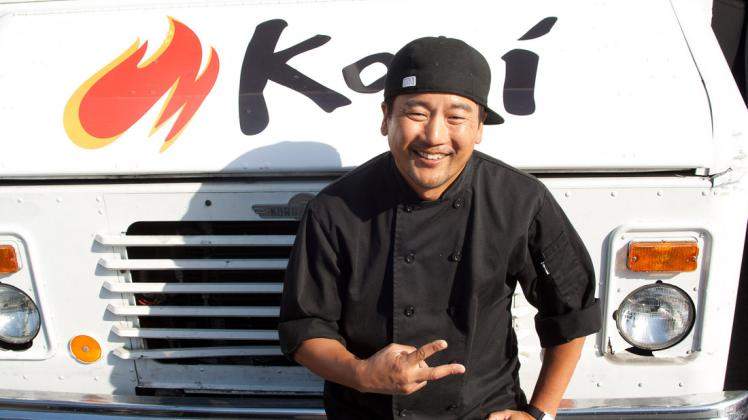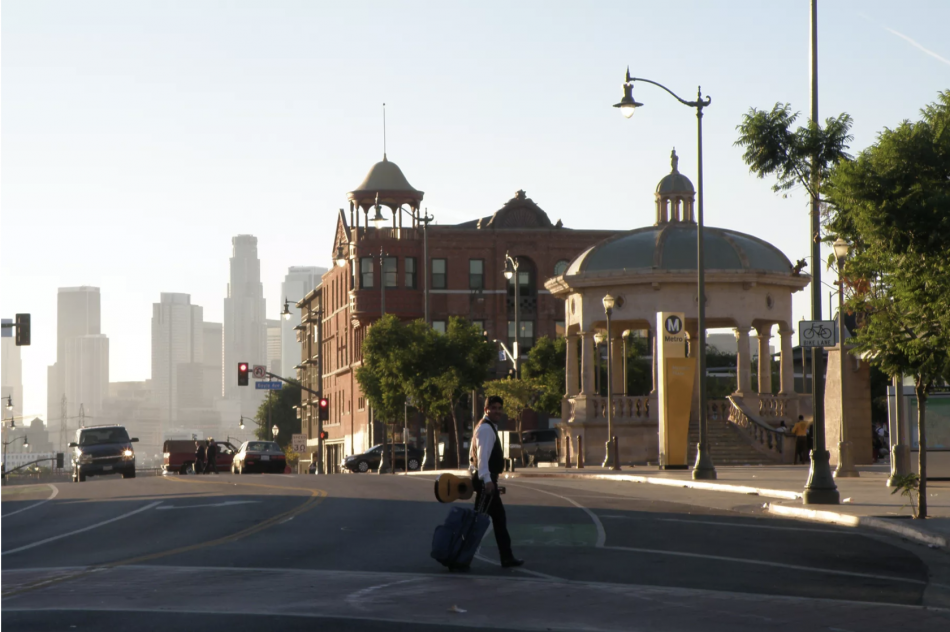From the editor: “L.A. Urbanized” is a series of articles exploring why Los Angeles is currently in the midst of an urban revolution and what it means for the city’s future. It documents the evolving development landscape of the region over the past few decades, identifies what key events brought about its urbanist turn, and considers what the impact of this transformation will be. Urbanize LA will publish one chapter of the 9-part series each Monday from April 2 through May 28.
- Introduction
- Chapter 1: Local Growth Politics and Development Patterns
- Chapter 2: The Several "Revitalizations" of Downtown Los Angeles
- Chapter 3: The Making of Los Angeles as a Global City
- Chapter 4: The Sparks of Downtown LA's Boom
- Chapter 5: Post-Recession Growth Acceleration in DTLA
- Chapter 6: Monograph of LA 3.0
To write about the effects of a ‘revolution’ that has yet to be completed is, of course, to some extent an exercise in speculation. However, there are certain structural changes we are witnessing in the passage from the solidly suburban LA 2.0 to the more urban LA 3.0 that may lead to reasonably predictable outcomes. And, with the revolution partially complete by this point, we can observe certain changes that have taken place thus far, and attempt to extrapolate forward.
Broadly speaking, LA 3.0 appears to be far more of an integrated unit that has been its predecessor, bringing substantial changes to the city’s economic landscape and cultural sense of identity. The sorts of dramatic changes associated with a rearrangement of the city’s landscape will not be tranquil. Many neighborhoods across the city are likely to be changed quite significantly in the process, as the old arrangement where the ‘inner city’ neighborhoods located close to Downtown were undesirable gets flipped on its head. At a more abstract level, the city’s set of ideals and self-perception will need to be re-defined, as certain unique facets of its identity simply will no longer apply under the new model.
Economic Impacts
From the perspective of the regional economy, the movement to LA 3.0 appears to be quite positive. The LA-area economy has grown significantly since its various crises of the early 1990s, but in some respects it has been outpaced in growth by certain other major American metropolises. Whereas LA at the height of its 2.0 model was an explosive engine of growth in the American economy, at the cutting edge of a number of new industries, for the past couple of decades LA-area growth has more closely mirrored the national average, and the San Francisco Bay Area is most frequently associated with tech innovation today.
One of the most comprehensive recent analyses of what happened to the LA economy structurally is to be found in The Rise and Fall of Urban Economies: Lessons from San Francisco and Los Angeles. This book may strike a reader as at times a bit jingoistic in favor of San Francisco beyond the context of its thesis. For example, the epigraph of the book features the quotation “When I first came to Los Angeles, I realized that no one had ever painted it” in contrast to one about the apparently inherent inventiveness of San Francisco’s people. But certain key arguments from this work about what has brought relative stagnation to the LA economy should be taken seriously. Most prominent throughout this work is the notion that the business community of Greater Los Angeles was less well-integrated than that of the Bay Area, so it could not coordinate actions as well. Also, the book argues that LA business leaders aimed to maintain legacy industries by focusing on keeping costs low (such as lower minimum wages, taxes, and government fees), while Bay Area business leaders pursued new industries by investing more and allowing lower-value industries to move elsewhere.
Looking at the nature of LA 3.0, the stage may be set for improvement on both of those fronts. The same lack of mobility in the region that has balkanized social and cultural life to the extent that LA is often thought of as a series of urban villages has had a similar effect on the area’s business communities. It can be difficult for business people Downtown, for example, to meet and work with their counterparts on the West Side, in Orange County, or elsewhere because getting between all of these regions is often prohibitively time-consuming.
Likewise, the region’s major industries tend to cluster by region, with entertainment on the West Side and in the Valley, aerospace in the South Bay and Antelope Valley, biotech spread out among the distant suburbs and near major hospitals, manufacturing southeast of DTLA, port-related industries centered on San Pedro and Long Beach, and the ‘Silicon Beach’ technology cluster located in the beach-front neighborhoods north of LAX. A Los Angeles which is reopened to movement by the presence of effective public transit is one in which these various business communities will be better able to integrate and coordinate their efforts toward the development of the metropolis as a whole. Moreover, an increasingly dense Downtown can play host to a denser set of high-value businesses, with the efficient economies of scale that come with such clustering.
With respect to growth strategies, the low-cost, low-margin model pursued more aggressively in Los Angeles during the 1990s appears to be already on its way out. Public policies enacted over the past few years fly directly in the face of that model, such as Mayor Garcetti’s enactment of the $15 minimum wage and new tax and spend programs for transit development and services for the homeless. The inexorable upward movement of land values is also putting an end to this low-cost model, even beyond the impacts of public policies to that effect.
When I worked on Mayor Garcetti’s Business Team during the summer of 2015, we hosted a meeting with the leaders of a few prominent local manufacturing industry groups. Ostensibly, the industry groups wanted to have this meeting in order to voice their concerns and opposition to the increased minimum wage policy, which they argued would drive them out of business and force their operations out of the region. But over the course of the meeting the vast majority of the concerns they voiced related to the rent increases their industrial facilities were facing and the lack of affordable housing options for their workers — the new minimum wage policy appeared to be only the cherry on top of these structural challenges.
The land in the region continues to grow more valuable, now that the population and economy continue to grow while the supply of land remains generally constant. Industrial operators (and others operating on very thin margins) will increasingly face pressure from the market to convert their factories and warehouses to creative offices and lofts — or to tear down their buildings and replace them with new construction. Two major former industrial centers in the region, the DTLA Arts District and Culver City, are now mostly home to startups, architecture firms, buzzy cafes, and other such high-margin industries that can afford to pay the high rent increasingly needed to be located in LA.
Yet it is through relatively low pricing that Los Angeles may effectively compete with its northerly neighbor over years to come. As of now, the Bay Area technology industry is clearly the established leader in the country and the world beyond. Over recent years, however, LA’s tech economy has been growing quite rapidly. The amount of venture capital funding the city’s startups have been receiving grew six-fold from 2012 to 2016. Many major technology firms have been establishing or expanding their Los Angeles offices. A recent article out of The Economist reckons that it is the “third-most-prominent outpost for startups in America, after San Francisco and New York.”
One of the most important drivers of this growth is LA’s relatively low cost of living as compared to the San Francisco Bay Area. As previously discussed, Los Angeles has the least affordable housing market in the country, when prices are compared to income, but incomes are on average lower in LA than the Bay Area, and housing costs are higher in the Bay Area on absolute terms. As such, office rents and employees’ compensation requirements in LA are a relative bargain. LA offers a strong engineering talent pool, perhaps not quite as strong as that of the Bay Area, but dynamic enough at a lower cost to attract tech employers’ attention. As the city makes more room for high-density development, over years to come LA may be able to expand its housing supply more effectively than other cities such as San Francisco, which are more space constrained, and in so doing capture a greater market share of the innovation economy.
Cost considerations aside, Los Angeles under the 3.0 model should be more able to attract the sorts of younger talent that feeds this sort of economy than it was under the 2.0 model. Young, well-educated tech workers have in recent years shown a preference toward working in urban rather than suburban environments. It is in part for this reason, perhaps, that Uber is opening its Los Angeles office in DTLA, and why startups such as Hyperloop Technologies and Soylent are based in Downtown’s Arts District, rather than in the ‘surfurban’ locales more typically associated with the technology industry in Los Angeles. Under the LA 2.0 model, this sort of urban lifestyle was functionally not an option throughout Southern California; but with the addition of the new urban Fifth Ecology under the 3.0 model, this lifestyle option is now available in Los Angeles for a workforce that has great choice in deciding where it will locate.
Cultural Impacts
Moving beyond economic impacts of the new model, the reshaping of LA’s urban form will surely have an impact on residents’ perception of the city and of each other. If LA is a series of urban villages, then each village often has its own relatively homogenous ethnic and socioeconomic makeup. Painting the city with very broad brush strokes, one could identify the various villages as, for example, ‘Jewish’, or ‘Korean’, or ‘Chinese’, or ‘Persian’, or ‘Mexican’, or various other generalizations. These are oversimplifications, of course, but the fact remains that many Los Angeles neighborhoods have unusually strong cultural affiliations, which only adds to the sense of balkanization between the various villages in the region. Indeed, urban planner William Fulton argues that this sort of isolation leads to an inward-looking “cocoon citizenship”, where what is taking place in one village in the region is perceived to have little impact by the denizens of the others. This type of sorting is less visible in the Fifth Ecology, however, which can be interpreted in some respects as a neutral common ground between the various communities of the region. DTLA, for example, and in contrast to most other neighborhoods in the region, has no truly dominant ethnic groups, with the population being 39% Caucasian, 23% Latino, 16% Asian, and 8% African-American.
The architect Charles Moore once mused, “It is interesting [...] to consider where one would go in Los Angeles to have an effective revolution of the Latin American sort. Presumably, the place would be in the heart of the city. If one took over some public square, some urban open space in Los Angeles, who would know? [...] The only hope would seem to be to take over the freeways.” Moore was speaking during a solidly 2.0 period in LA’s history, and his conclusion seems accurate for that time. But positing the same question today yields perhaps a different answer. Increasingly, there is a set of public spaces in the Los Angeles area which is coming to be seen as being of the entire metropolis as a whole, rather than only being relevant to a particular village within it.
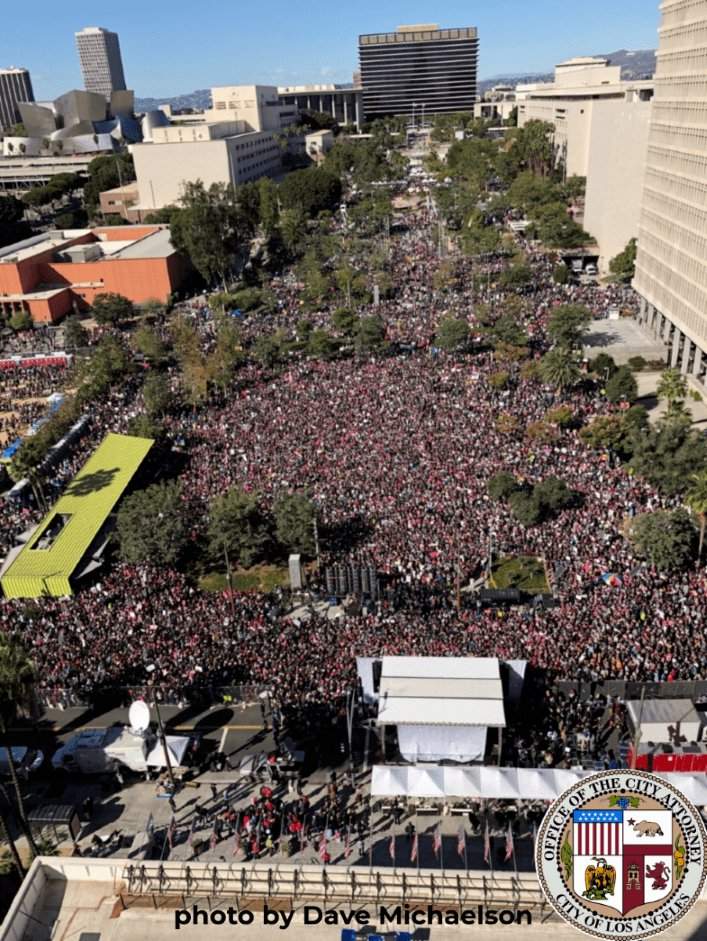
In certain respects, DTLA is more often playing this sort of public role that urban centers are typically expected to play. Museums and other cultural institutions in DTLA are attracting people from across the region, public parks and squares in DTLA are almost all being expanded or renovated, and scenes from new DTLA developments such as L.A. Live are increasingly being featured in cinematographic ‘master shots’ which establish the setting as being Los Angeles. More profoundly, public spaces in DTLA are increasingly being used for traditional public actions. For example, the “Women’s March” in opposition to Donald Trump on January 21, 2017 had 750,000 people attend. This was by far the largest massing of any such march in the country on that day, larger than the 500,000 people who attended in Washington DC, the 400,000 people in NYC, and the 250,000 people in the Bay Area. Attendees so heavily utilized public transit to get to and from the event that certain train stations had hour-long waits to get onboard. Its successor the following year reached an attendance of 600,000, which was also by far the largest in the country.
This being the age of the internet, however, discussion of public space must certainly include cyberspace. I had the chance to sit down and speak with LA Times architecture critic Christopher Hawthorne, who has written quite a bit on the topic of the “Third Los Angeles”, which in a fashion similar to this paper emphasizes the increasing focus of the city on its urban core. Social media plays a key role in forging a pan-metropolitan civic identity for Los Angeles denizens, as Hawthorne sees it. Few places are so iconic of LA as the Hollywood Sign. But for much of its history this landmark has been viewed from the distance of the flatlands below, and anyone from LA knew that only tourists cared about the sign. Yet over the past decade, the dissemination of smartphones has given people the mapping tools to navigate the confusing canyon roads leading to the sign more easily, and the existence of popular social media platforms has incentivized countless people (locals included) to make the trek to take that perfect photo near the sign for Instagram.
This all may sound rather banal, but dozens of destinations worth trekking to like this one now suddenly exist across the LA area because of their prominence on social media, each one a new node of an increasingly wide network of places across the region inspiring civic identity. One of the social media phenomena that most struck Hawthorne was the creation of a Twitter account for the line at the new Broad Museum. The Broad Museum, opened in 2015 Downtown and made free to the public, has proven popular far beyond the expectations of its founders. Given this oversubscription, the line to enter the building often lasted in excess of an hour, up to three or four hours at its worst. A few months after opening, the Museum created a Twitter account to provide regular updates on its wait time. Ironically, the existence of this account may have made the lines even worse, because the public dissemination of knowledge that the Broad Museum was a popular place to be, its attraction so enticing that every day people were willing to wait hours to see it, raised the mystique of the site and made The Broad all the more desirable to visit.
Of course, any conversation about the impact of social media on civic identity formation in the new Los Angeles would be incomplete without discussion on food trucks. Once regarded as a strictly utilitarian form of food service, today food trucks are widely perceived across Los Angeles as being quite trendy and desirable. There are dozens of different types of trucks, which often serve experimental sorts of cuisine, made possible by the lower initial capital investment required to operate a food truck as opposed to a brick-and-mortar restaurant. This institution of experimental high quality food trucks was popularized in large part by the now-famous LA-area chef Roy Choi, earning Choi a spot on Time Magazine’s “100 Most Influential People” list for 2016. Food trucks are inherently mobile, and the ones in LA often cover great distance within a single day. They do not limit their stops to within any single village or region of the city — they tend to have quite the broad reach. They are afforded this sort of reach through social media, of course, on which they post to inform people from across the city where they will be located, and hungry Angelenos may jump from village to village in pursuit.
Speaking generally, social media has the effect of bringing together these disparate, distant places from across Greater LA, beyond the bounds of one’s own urban village, placing them before one’s eyes, and enticing one to venture forth and experience them. Ever more regions of the city that are not one’s own can increasingly be claimed under the same cultural umbrella, and a pan-Angeleno identity is increasingly being inculcated.
For all of its perceived and actual upsides, however, interconnectivity is not a wholly positive force, and its recent resurgence in Los Angeles may well come with certain pitfalls. The semi-isolated urban villages of Greater Los Angeles, cut off from one another by distance and impregnable traffic congestion, which have promulgated a deleterious ‘cocoon citizenship’ on one hand, have also allowed for distinct cultural identities to thrive undisturbed on the other hand. This sort of dynamic has been explored in relative depth in this series with respect to the Chinese communities in the San Gabriel Valley. But this sort of cultural agglomeration exists across many parts of the metropolis, allowing people from a wide array of cultural backgrounds to find their home in the LA area. It is said at times for this reason that LA is more like a ‘salad bowl’ for immigrants, rather than the storied ‘melting pot’.
One of the public figures who has explored this concept in great depth is LA Times food critic Jonathan Gold. In his estimation, one of the more distinct aspects of LA’s dining scene is the extreme authenticity of ethnically diverse foods. Because certain neighborhoods have an unusually dense and relatively homogenous population of, for example, Thai people, the Thai restaurants in this neighborhood cater almost exclusively to Thai clientele and palettes. Thus they offer a much wider array of possible Thai cuisines than the standard pad thai and other such offerings that one would find in restaurants catering to a mostly non-Thai clientele.
Extending this concept beyond food, we can understand the value that these ethnic agglomerations hold for members of a certain community, including access to religious and cultural institutions, and strong senses of social trust within certain tight-knit communities of common backgrounds. As Los Angeles transitions to its 3.0 model and grows more interconnected, the insularity of some of these villages that has allowed them to develop their own strong subcultures is threatened. Outsiders begin moving in, newfound connectivity makes the land more valuable, beyond the reach of what many recent immigrants can pay, and these discrete neighborhoods begin to be absorbed into the pan-Angeleno whole.
Indeed, the threat that this new transition presents to certain established neighborhoods is one of the greatest challenges that LA may be facing over coming decades. Gentrification has become a hot button issue in the city, provoking a wide range of responses. Looking to coming decades, the churn of neighborhoods changing appears likely to continue and even expand. And while this series has focused mostly on relatively benign ‘self-gentrification’ sorts of cases, as well as development Downtown which mostly built over parking lots or renovated disused structures, rising housing costs are causing gentrification of the more traditional, pernicious sort in many neighborhoods around the city.
Indeed, the growth and development of Downtown LA over the past couple of decades has seemingly opened the pandora’s box with respect to future growth in the city. In the late 1990s, forums such as ULI’s Urban Marketplace and the CCA endeavored against great odds to convince real estate players that investing in “inner city” markets was a viable option. Initial activity in that space was skittish. But by now the concept of successful “inner city” investment has been proven, and so the range of neighborhoods seeing large scale investment has expanded dramatically. This development had allowed for the expansion and improvement of housing supply and commercial activity in areas which were once investment deserts. Raising the desirability of these neighborhoods, however, can also have the effect of raising local prices, in some cases beyond that which previous residents can afford to pay.
Precise figures on how many people have been pushed out of their neighborhoods by rising housing costs in LA are hard to come by, but the number must by staggering, and its socioeconomic effects devastating. At the extreme edge, Los Angeles County has seen a startling increase in the homeless population over recent years, rising 49% since 2013. The Los Angeles Times launched an editorial series on the topic in February of this year, declaring homelessness in the city to be a national disgrace. Rising housing costs, hand in hand with associated gentrification, are widely believed to be the primary driver of this phenomenon.
Notably, many of the neighborhoods most affected by gentrification are those that surround Downtown LA. The growth of Downtown proper, surrounded by the four freeways, has been relatively benign in this regard. But now that DTLA is a very desirable (and increasingly expensive) place to be, upward pricing pressure is being felt in all of the neighborhoods close to it, many of which are densely populated by deeply entrenched communities. These neighborhoods include Echo Park, Chinatown, Westlake, Pico-Union, Highland Park, and more. But the most visible example of this is to be seen in Boyle Heights, a largely Latino and specifically Mexican neighborhood located just east across the river from DTLA. Criss-crossed by multiple freeways, Boyle Heights has been relatively cut off from its surroundings for several decades, allowing a particularly tight-knit community identity to develop there. Now, faced with the specter of spillover gentrification coming from DTLA, anti-gentrification activists in the neighborhood are making a great effort to stop it from taking place.
When real estate agents posted flyers in now-expensive DTLA advertising the relative affordability of the neighborhood, Boyle Heights activists went on a social media campaign against the posting agents. In December of 2015, Boyle Heights activists confronted a group of UCLA urban planning students on a walking tour of the neighborhood and escorted them out of it. These activists have also targeted art galleries that have opened in Boyle Heights, viewing them as the first line of offense against the neighborhood, tagging them with graffiti and staging regular protests against them. Looking ahead a few years, it does appear that Boyle Heights and other such neighborhoods near DTLA and other gentrifying areas will have difficulty resisting that wave themselves. Located in such close proximity to an increasingly desirable destination, these locations’ market prices will likely rise as well. Former county supervisor Gloria Molina, who had acted in opposition to development in neighborhoods such as Boyle Heights, put it bluntly: “Naturally, these neighborhoods will be gentrified. But they will be gentrified overnight if we allow developers to.” This is particularly true for neighborhoods which are now connected quite seamlessly to DTLA by public transit, given that this is now the easiest way to get between DTLA and its surrounding neighbors, and that numerous studies have demonstrated the means through which the addition of rail public transit stations increases pricing in the areas surrounding them.
On a more macro level, we are likely bearing witness to an overall change to LA’s sense of civic ideals and identity. LA 2.0 was widely considered the spiritual home of the suburban house and automobile lifestyle, and this was largely its unique selling point that enticed people who wanted that to move there. LA 3.0 cannot reasonably hold this lifestyle as its ideal any longer, given untenable pricing and congestion.
The recognition of this changing reality has of course provoked backlash by those for whom the ideal of LA 2.0 is something they hold dearly. Over recent years there has been a spate of renewed anti-growth political activity. In just the past couple of years there have been two major ballot initiatives that have called for substantial restrictions on growth in the cities of Los Angeles and Santa Monica. But both of these ballot measures failed by a wide margin, and, together with pro-growth ballot measures approved over the last year expanding funding for transit and services for the homeless, the political winds appear to be on the whole more pro-growth in LA than they have been in decades, with these recent anti-growth proposed measures serving as a reaction against that sentiment. Nevertheless, the question for Los Angeles remains: what will be the unique identity of Los Angeles 3.0, and what will be its role in the twenty-first century?
Previous Installation: Monograph of LA 3.0
Jason Lopata works as a land use consultant with Craig Lawson & Co., LLC, helping real estate development projects in LA navigate the city approvals process. Jason previously spent time on the Business Team of LA Mayor Eric Garcetti. He also writes articles on globalization and urban development for Stratfor, the geopolitical analysis website. Jason received his bachelor’s degree from Stanford University and completed programs of study at the University of Oxford and at UCLA’s Anderson School of Management. While at Stanford, he founded and led the student real estate organization, and authored his senior thesis on Los Angeles development over the past 30 years.




